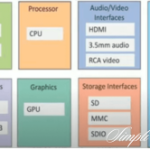Components of IoT Ecosystems: A Complete Breakdown
Introduction
The Internet of Things (IoT) is transforming industries by enabling smart connectivity between devices, sensors, and systems. A well-structured IoT ecosystem consists of several essential components that work together to collect, analyze, and process data efficiently. In this blog, we will explore the core components of IoT ecosystems and their roles in creating a seamless connected environment.
1. IoT Devices and Sensors
At the heart of every IoT ecosystem are devices and sensors that collect real-time data. These components detect environmental changes, motion, temperature, humidity, pressure, and more. Examples include:
- Smart thermostats
- Wearable health monitors
- RFID tags
- Industrial sensors
2. IoT Gateways
An IoT gateway acts as a bridge between IoT devices and the cloud, ensuring seamless data transmission. These gateways:
- Filter, process, and encrypt data
- Reduce latency by performing edge computing
- Provide security by preventing unauthorized access
3. Cloud Computing Platforms
Cloud platforms serve as the backbone of IoT ecosystems, allowing data storage, processing, and analytics. These platforms offer:
- Scalability to handle massive IoT data
- Machine learning and AI integration for real-time insights
- Seamless data backup and recovery
4. Connectivity & Communication Protocols
Efficient data transmission requires reliable IoT connectivity. Various communication protocols ensure smooth interaction between IoT devices and servers. Popular IoT communication protocols include:
- Wi-Fi & Bluetooth
- Zigbee & Z-Wave
- MQTT (Message Queuing Telemetry Transport)
- LPWAN (Low Power Wide Area Network)
5. Data Processing & Analytics
Raw data collected by IoT devices needs real-time processing and analytics to extract valuable insights. This step involves:
- AI-driven predictive maintenance
- Big data analytics for informed decision-making
- Edge computing to reduce latency
6. IoT Security & Privacy
With millions of connected devices, IoT security is crucial to protect sensitive data from cyber threats. Essential security measures include:
- End-to-end encryption
- Two-factor authentication
- Secure firmware updates
7. IoT Applications & User Interface
A well-designed IoT application enables users to interact with their connected devices through dashboards and mobile apps. Examples include:
- Smart home automation apps
- Industrial IoT monitoring software
- Healthcare tracking platforms
The IoT ecosystem is a dynamic network of interconnected devices, gateways, cloud platforms, and security measures. Understanding the components of IoT ecosystems helps businesses and individuals leverage IoT technology for automation, efficiency, and security. As the industry evolves, innovations in IoT security, data analytics, and AI will continue to drive its growth.



